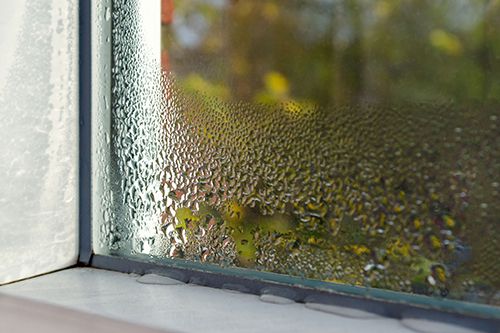Insulation is designed to slow heat transfer, not block airflow. Insulation and airflow are important for your space's health. Improper airflow can be hazardous, which is why it is crucial to work with an insulation expert. Below are possible situations that can occur with improper airflow:
- Impact personal health
- Mold
- Spread pollutants
- Energy loss
Properly managing airflow increases the efficiency of a building, therefore, reduces stress on HVAC systems, and controls the air quality of the space. There are two ways to build airflow: Controlled airflow and uncontrolled airflow.
Controlled airflow is airflow that is managed through mechanical devices. Controlled airflow allows a building to efficiently ventilate inside air and bring in proper amounts of outside air.
Uncontrolled airflow is what is known as a “leaky” building. Air flows in and out of the building in a random pattern. It works against the home’s energy system, causing more stress on the HVAC system and other mechanicals.
Insulation & Airflow: Infiltration & The Stack Effect
It’s time to talk about a second way of heat transfer, convection. Convection can create a current when hot air or water rises and, consequently, cool air or water sinks.
In a building rising hot air creates an area of high pressure at the top of a building. That pressure is only lessened by conditioned air forcing its way out of any hole to the outside. Warm air escaping the building boundaries, or building envelope, then creates negative pressure at the bottom of the building and pulls in air from the outside environment.
You can visualize the process as like drinking a milkshake through a straw. This infiltration, or stack effect, means the air you’ve conditioned by removing moisture and heating or cooling is constantly lost at the top and replaced at the bottom by air that must be turned comfortable—costing you more and more in energy bills.
Insulation & Airflow: Moisture
In a nutshell: Water vapor causes problems when it condenses in a vulnerable place
A good roof can keep out water damage in the form you usually think of: liquid. But what about water vapor? When we talk about air movement—either intentional through ventilation or unintentional through infiltration—it’s important to understand water vapor always moves with it.
As long as it stays in vapor form, water’s ability to cause damage within a building is only its potential to turn into liquid again in the wrong place. Water vapor that meets a temperature at or below its dew point will condense into liquid water, causing harm to materials like drywall and insulation other than closed-cell spray foam, which is its own moisture barrier.
Every insulation option has pros and cons. When it comes to water damage, cellulose can lose its fire and pest resistance over time in the presence of excess moisture. Fiberglass can harbor mold or mildew. Other parts of your home or business are at risk, too. Inner wall cavities are vulnerable and prone to moisture problems like mold and rot.
At Koala Insulation, we know which building uses and climates call for a water vapor barrier, which type to recommend, and the proper way to install one for the maximum practical impact.
